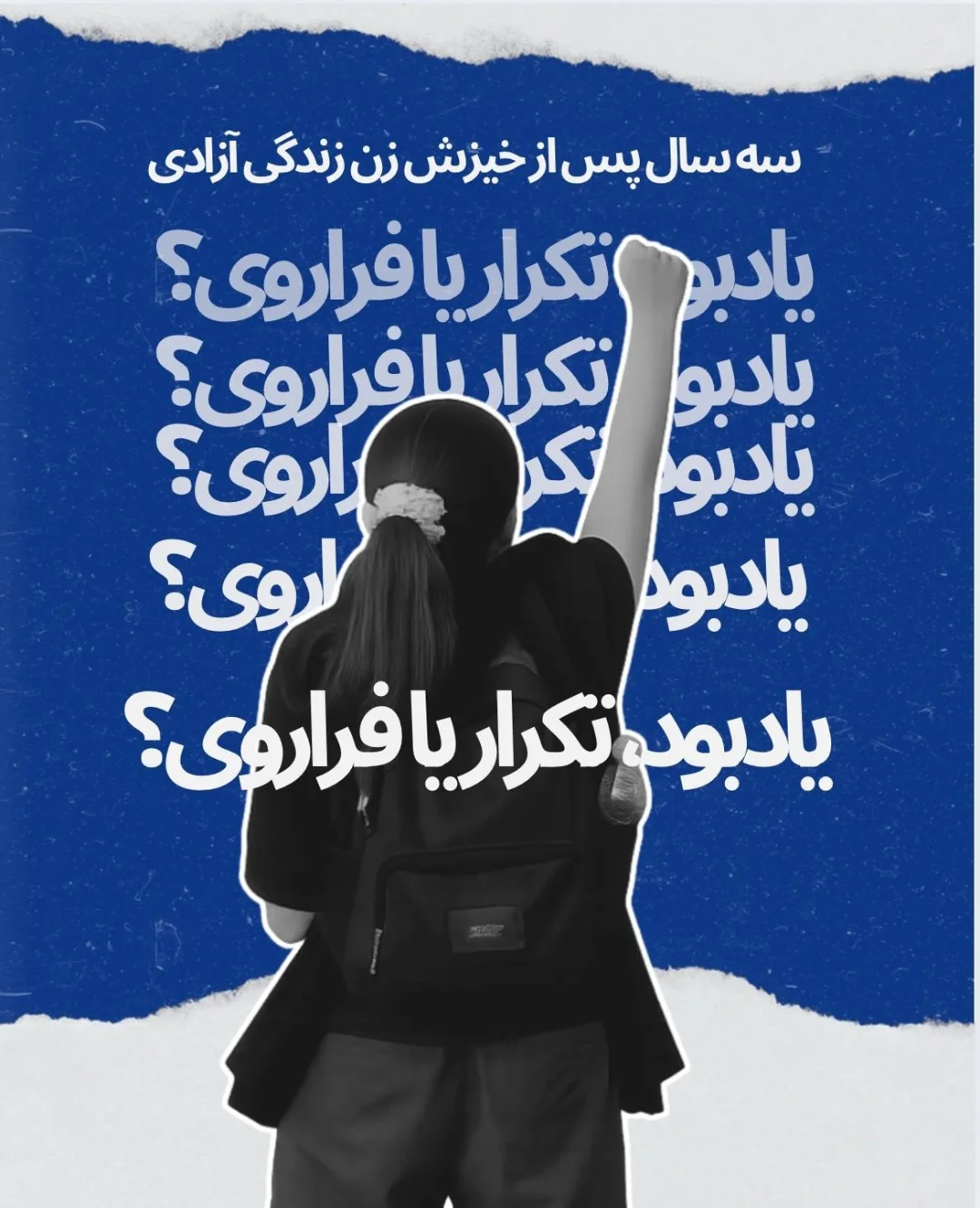
The profound and inspiring statement below was posted in Farsi on September 14, 2025 by OSYAN, a "Collective of Women in Rebellion - Iran and Afghanistan", who sent us this translation to post.
Over the past three years, the political and social landscape of Iran—and indeed the world—has undergone profound changes. Some of these shifts are the direct outcome of the courageous uprising of women and the people of Iran in Woman, Life, Freedom: weakening the regime; challenging the patriarchy embedded within the state, forcing the IRI to retreat on the issue of compulsory hijab; confronting patriarchal norms within society itself; unleashing a part of women’s revolutionary potential; the emergence of minimal but significant forms of grassroots organization; and raising critical questions about the future. Other changes, independent of our struggles, have also shaped the global scene and impacted Iran: the rise of Trump fascism and the launch of a “New Middle East” project by the U.S./Israel—ranging from genocide in Gaza to a twelve-day war with Iran—which weakened the regime further while simultaneously threatening the lives, struggles, and aspirations for freedom of the Iranian people.
Yet, some realities remain unchanged:
The Islamic Republic has not yet been overthrown; global capitalism continues to generate crises, wars, oppression, and exploitation; women and queer communities are still subjected to repression while simultaneously embodying immense revolutionary potential for dismantling both the Islamic Republic and the capitalist order; and the people have not yet provided clear answers to the great questions of the future, nor built organized structures around a positive alternative. Meanwhile, reactionary opposition forces—whether from within or outside the regime—are mobilizing and competing for power.
The global situation and internal contradictions have fractured the Islamic Republic, leaving the regime deeply insecure and acting in desperation. This weakness prevents it from exercising full class domination. In turn, it resorts to executions, mass repression, imprisonment, poverty, and hunger to tighten its grip on the people. These dangers and potentials compel us, on the anniversary of the Jina uprising, to move beyond mere remembrance or even hope for its repetition. We now face circumstances where both the stakes of victory or loss are greater than ever, including the possibility of liberation from the chains of repression, exploitation, and patriarchy of the Islamic Republic and its alternative counterparts within the same system which have tried to ride the wave of popular uprising or foreign bombs in favor of one or another part of the ruling class.
This moment is also an opportunity for revolutionary forces: by analyzing reality truthfully, without siding with imperialist agendas or reactionary factions, we can chart a distinct path for the people’s emancipation. If we do not seek a mere change of faces in power, if we refuse to settle for the continuation of patriarchal, exploitative, and hierarchical relations, then we must not wait. Now is the time to consciously build an alternative that goes beyond spontaneous uprisings and movements. The broader the people’s resistance against compulsory hijab, executions, imprisonment, war, poverty, unemployment, power cuts, and water shortages, the greater our responsibility becomes to strategize, organize, and define the content of the desirable future. This responsibility cannot be met simply by tailing behind the just struggles of the people. If we fulfill this role, the people themselves will learn to free their imagination from the confines of the existing order.
We envision a future in which society is not divided into men and women—where women are neither commodified, nor reduced to “honor,” nor confined to unpaid domestic labor. A future where children are not divided into Iranian, Afghan, Arab, or Baluch, but where all have the right to education, joy, and equality. A future in which humanity is not split into owners of the means of production and sellers of labor power, but where all share the right to work, the right to eat, and the development of their talents. A future where artists, writers, and the people at large are encouraged in critical and creative thought, and no dissenting voice is silenced. A future where the people have genuine power to shape the direction of society and their own destiny—not only at the ballot box, but every day, from the grassroots to the highest levels. Yes, ”Woman, Life, Freedom” still carries immense hope for many. But this courage, when coupled with a vision of such a future, can grow far stronger, deeper, and ultimately bring an end to the vicious cycle of monarchy and Islamic rule, cycle of imperialism and fundamentalism.
On this third anniversary of Jina, we call on you to raise this voice against those women’s organizations that have become extensions of Israel or backers of the Islamic Republic. We urge you to put forward this vision of the future in contrast to monarchists, reformists, or “Axis of Resistance” factions, and make it part of the dialogue with the courageous women and youth who took part in the Jina uprising. This very step can nurture the seeds of a far more radical basis for future organization and struggle.
Click on any photo to view full-sized lightbox.


